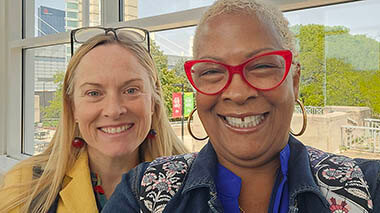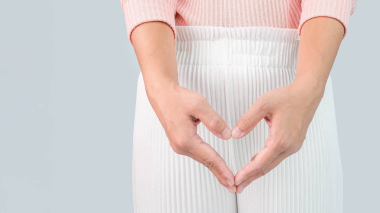Women make up half of the world’s population, and for the majority of them starting their period is a defining event in their adolescent development. But why, and do we care? Culturally, menstruation has significance as it marks the potential for reproduction. And with menstruation in the forefront, practicing gynecologists are still surprised at how often they hear misinformation about what a normal menstrual cycle should look like for a young girl, how many girls delay evaluation and treatment for menstrual problems or seek care for normal cycles.
The American College of Obstetricians and Gynecologists published an article in 2015 suggesting the menstrual cycle is a vital sign like heart rate, blood pressure and weight. Identifying an abnormal pattern in young women may increase awareness for other health concerns as these young women grow.
"As a pediatric and adolescent gynecologist some of the most common problems I see are related to periods whether they be heavy, irregular, absent, or painful," says Erin Cook, MD, a pediatric and adolescent gynecologist at Atrium Health Pediatric Gynecology
Here, Cook answers some of the most frequently asked questions asked about young women and their menstrual cycles.
Question 1: So, when is the normal age for a young woman to first expect getting her period and how long does it typically last?
Answer 1 | Cook: The average age of first period is 12.5 years old with the average length of the first period being 2 to 7 days.
Q2: When should a girl be evaluated if she hasn’t had a period?
A2 | Cook: Age 15 if she has had breast development, age 13 if she has not had breast development or if it has been three years since breasts started to grow and a period hasn’t happened.
Q3: When is it too early to go through puberty?
A3 | Cook: Signs of puberty (breast development or pubic hair) should be evaluated by a doctor in girls less than 8 years old. Periods in girls less than 9 years old should also be evaluated.
Q4: Some girls get their period after age 15. Is that OK?
A4 | Cook: This can be a normal age for a minority of girls. As long as the rest of puberty development has been on track this may not be a concern, but these girls should see a pediatrician or a gynecologist to make sure this doesn’t represent a health problem.
Q5: How often should my period come in the first year (cycle length)?
A5 | Cook: The majority should be 21-45 days apart. This is counted from the first day of one period to the first day of the next. The longest interval is usually between the girl’s first and second period.
Q6: How long is it ok to go without a period before seeing a doctor?
A6 | Cook: 90 days is a good rule. Of course, if there is a risk of pregnancy girls should not wait 90 days before taking a pregnancy test.
Q7: What’s the best way to track changes in your period?
A7: I encourage all of my patients to use an app to track their periods. Most apps calculate cycle length and track duration so girls can make sure their cycles fall within normal parameters. This can be a good way to know if they should discuss concerns with their doctor.
Q8: How do I know if it’s too heavy?
A8 | Cook: Consult your doctor if you’re needing to change pads or tampons more frequently than every two hours or bleeding lasts longer than seven days. Or, if there is any period-related issue resulting in missed school or avoidance of activities.
Learn more about Atrium Health’s Women’s Care.



